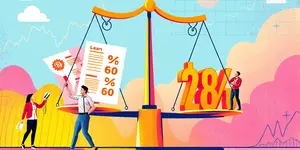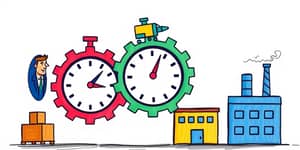
As central banks around the world continue to raise benchmark rates to combat inflation, borrowers face increasing uncertainty in their monthly obligations. In such an environment, choosing a fixed-rate loan can provide stability and financial peace of mind.
Since 2022, the U.S. Federal Reserve and other global central banks have enacted multiple rate hikes. These measures, aimed at controlling inflation, have driven variable loan rates upward and introduced unpredictability into household and corporate budgets.
With projections suggesting that rates may remain elevated or even climb further, locking in a loan rate today can serve as an effective hedge against future volatility.
Fixed-rate loans lock in an interest rate at the time of origination for the entire term. This structure ensures predictable monthly payments and eliminates the risk of rising rates increasing your obligations.
Borrowers who secure fixed rates can also enjoy easy and reliable budgeting, knowing exactly how much they will pay each month, year after year.
Variable-rate or adjustable loans tie their interest rates to benchmark indices, such as the federal funds rate. When these benchmarks rise, so do monthly payments, often with little warning.
Although variable loans may start with lower initial rates than fixed alternatives, their unpredictability can lead to payment shocks and budgetary stress.
Historical mortgage data from states like Maryland reveal that 15-year and 30-year fixed rates climbed steadily over the past five years. In mid-2020, average 30-year fixed rates hovered near record lows around 3.0%; as of June 2025, they are approaching 6.5%.
In a recent bank portfolio report, provisions for credit losses stood at 1.42% of gross loans as of June 30, 2024. Such measures highlight lenders’ awareness of rising risk and the importance of rate stability.
Locking in a fixed-rate loan requires timely action and preparation. Prospective borrowers should consider the following steps:
While many economists predict that central banks may pause hikes later in 2025, uncertainty remains high. Inflation dynamics, geopolitical tensions, and supply chain disruptions could prompt further rate adjustments.
In such a landscape, borrowers—whether individuals securing a home mortgage or businesses financing expansion—stand to benefit from shield borrowers from uncertainty that fixed-rate loans provide.
Ultimately, when rates are projected to rise or remain volatile, opting for a fixed-rate product offers potential long-term savings and lasting financial security. By taking deliberate steps to lock in favorable terms today, borrowers can focus on their goals—homeownership, education, or business growth—without the looming worry of unpredictable loan payments.
References













